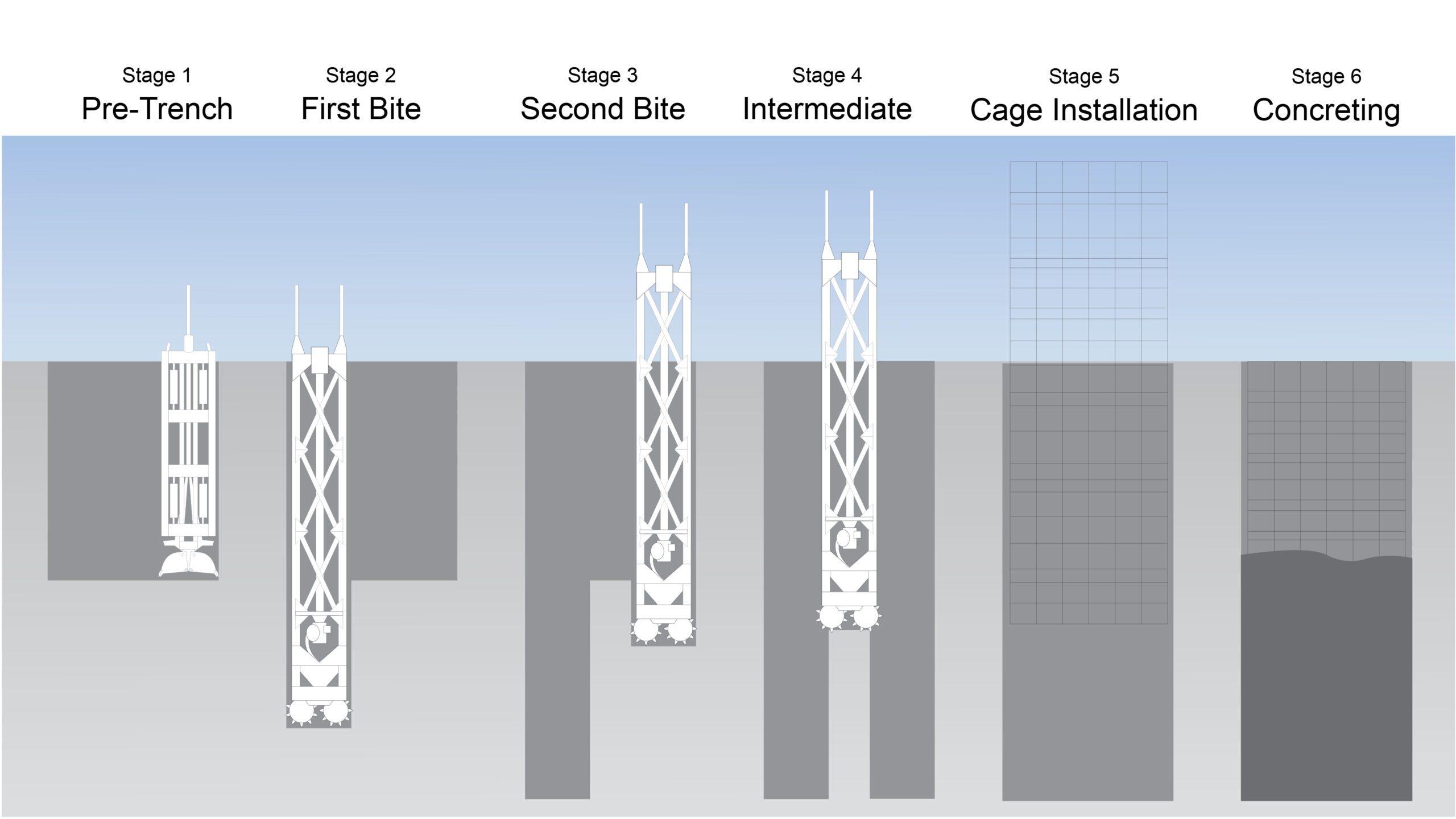Diaphragm Walls
Diaphragm walls, also known as D-Walls or slurry walls, are a robust retention system consisting of reinforced concrete walls that can be used for temporary or permanent shoring walls to depth of more than 300 feet. Diaphragm walls are formed by constructing a series of overlapping panels to build a continuous wall. Single panels can be aligned straight, in circles or even combined with T-shaped panels to form various layouts accommodating linear or curved structures, such as circular access shafts for tunnel projects or buttress walls for retaining structures.
These panels can be excavated in single or multiple segments (bites) of typically 9-foot length and width of 3 to 5 feet. Joints between the separate panels can be formed by using stop ends or by cutting the secondary panel into the primary panel using hydraulic cutters to form a continuous structural wall.
Prior to the excavation of the first panel, a guide wall is constructed along the alignment of the wall therefore defining the location and orientation of each individual panel. The guide wall also serves as a template for the excavation equipment to ensure proper vertical alignment of each panel down to the final excavation depth. The guide wall also protects the open trench excavation in the upper 5-10 feet from unexpected caving and provides a safe working platform for equipment and personnel.
Panels are generally excavated using clamshell buckets and hydraulic cutters. Chisels can be used to remove man-made or natural obstructions. During the excavation, a bentonite or polymer support fluid is added to the trench to prevent caving of the side walls. The fluid will support the open trench until it is replaced by concrete.
Once the final design excavation depth is reached, reinforcing steel cages are lowered into the trench, and tremie concrete is placed from the bottom up, displacing the support fluid. After the tremie concrete has set, it forms a reinforced concrete wall (diaphragm wall). For trench excavations through dense soil layers or into rock, hydraulic cutters are used due to their heavy weight and ability to cut into harder materials. These cutters can excavate hard rock with strength up to 20,000 psi.
Panels are typically reinforced with cages or steel beams, but when arranged in a circle, may not require reinforcing since a compression ring is formed by structural concrete. The concrete can be replaced by a low-strength cement-bentonite mixture, which is flexible and provides an almost impermeable barrier in case the wall is used as a cut-off wall.


